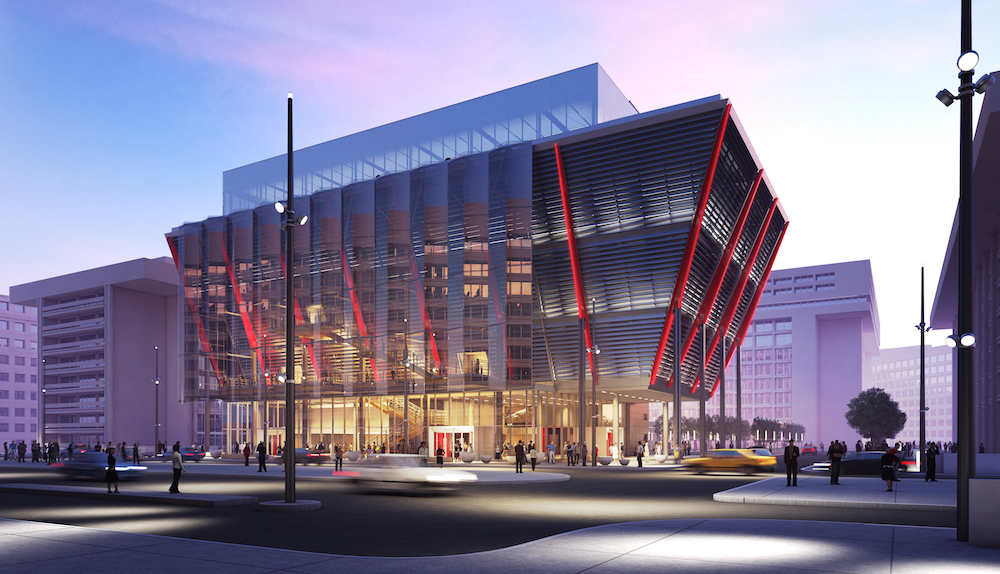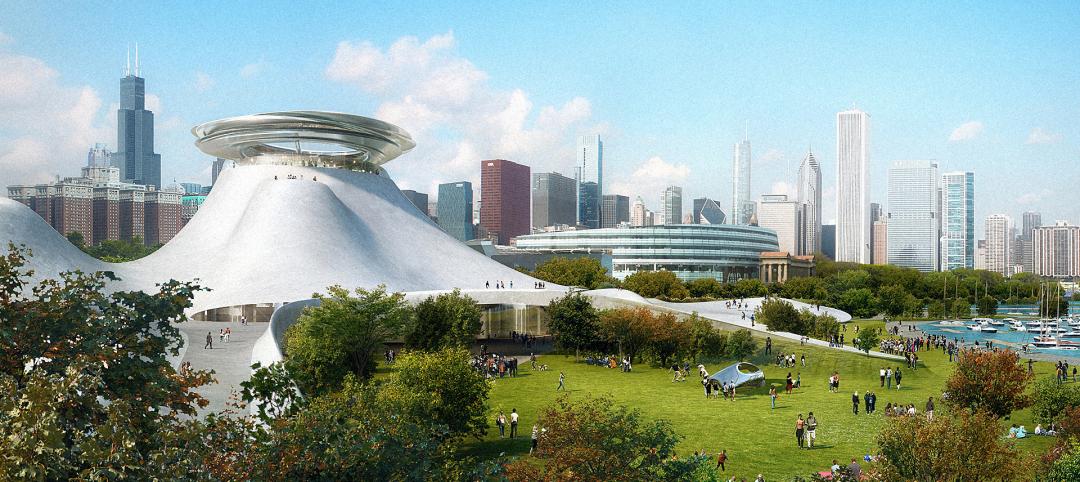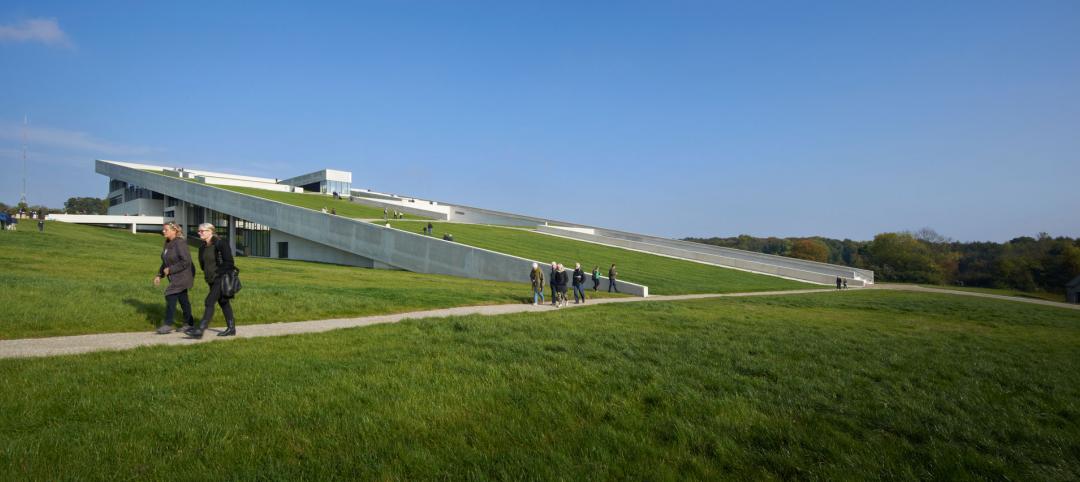The International Spy Museum in Washington, D.C., will be moving next year. If you want the new location of the museum you'll have to travel to a park in Partridge, Kan., where a package awaits you in a hollowed-out tree.
Just kidding! The museum says that it will relocate to a different spot in D.C., at L’Enfant Plaza between the National Mall and the Southwest Waterfront’s Wharf.
Construction has begun on the new 140,000-sf building. Designed by Washington, D.C.’s Hickok Cole Architects and London’s Rogers Stirk Harbour + Partners, the museum will have a glass veil wall in front of an enclosed black-box exhibition space, a setup that contributes to the museum’s “hiding in plain sight” theme.
The glass allows people to see activity inside and outside the museum, which the museum says will add energy to the L'Enfant Plaza. Considered a masterpiece when it opened, the plaza, which sits between a handful of commercial buildings with a shopping mall underneath, has been involved in renovation and demolition plans for years.
The building will have a theater and event spaces, and it will have more exhibition and educational spaces than its current location a few blocks north of the National Mall.
Opened in 2002, the International Spy Museum (SPY) contains exhibits that detail how spies recruit and train, make and break codes, and create false identities. Galleries of artifacts, photos, and videos show the history of espionage from Biblical times through the Cold War to today. The most popular special exhibit is Exquisitely Evil: 50 Years of Bond Villains, where visitors learn about the bad guys in the James Bond film series and how the franchise’s plots have adapted to changes in real-life spying.
The new museum will open in 2018 (Curbed Washington reports that the current museum’s lease doesn’t expire until the end of next year). The project’s developers are The Malrite Company and JBG Companies.
Related Stories
| Nov 14, 2014
Bjarke Ingels unveils master plan for Smithsonian's south mall campus
The centerpiece of the proposed plan is the revitalization of the iconic Smithsonian castle.
| Nov 12, 2014
Chesapeake Bay Foundation completes uber-green Brock Environmental Center, targets Living Building certification
More than a decade after opening its groundbreaking Philip Merrill Environmental Center, the group is back at it with a structure designed to be net-zero water, net-zero energy, and net-zero waste.
| Nov 7, 2014
NORD Architects releases renderings for Marine Education Center in Sweden
The education center will be set in a landscape that includes small ponds and plantings intended to mimic an assortment of marine ecologies and create “an engaging learning landscape” for visitors to experience nature hands-on.
| Nov 5, 2014
The architects behind George Lucas' planned Chicago museum unveil 'futuristic pyramid'
Preliminary designs for the $300 million George Lucas Museum of Narrative Art have been unveiled, and it looks like a futuristic, curvy pyramid.
| Nov 3, 2014
IIT names winners of inaugural Mies Crown Hall Americas Prize
Herzog & de Meuron's iconic 1111 Lincoln Road parking garage in Miami Beach, Fla., is one of two winners of the $50,000 architectural prize.
| Oct 29, 2014
Diller Scofidio + Renfro selected to design Olympic Museum in Colorado Springs
The museum is slated for an early 2018 completion, and will include a hall of fame, theater, retail space, and a 20,000-sf hall that will showcase the history of the Olympics and Paralympics.
| Oct 23, 2014
Prehistory museum's slanted roof mimics archaeological excavation [slideshow]
Mimicking the unearthing of archaeological sites, Henning Larsen Architects' recently opened Moesgaard Museum in Denmark has a planted roof that slopes upward out of the landscape.
| Oct 16, 2014
Perkins+Will white paper examines alternatives to flame retardant building materials
The white paper includes a list of 193 flame retardants, including 29 discovered in building and household products, 50 found in the indoor environment, and 33 in human blood, milk, and tissues.
| Oct 15, 2014
Harvard launches ‘design-centric’ center for green buildings and cities
The impetus behind Harvard's Center for Green Buildings and Cities is what the design school’s dean, Mohsen Mostafavi, describes as a “rapidly urbanizing global economy,” in which cities are building new structures “on a massive scale.”
| Oct 12, 2014
AIA 2030 commitment: Five years on, are we any closer to net-zero?
This year marks the fifth anniversary of the American Institute of Architects’ effort to have architecture firms voluntarily pledge net-zero energy design for all their buildings by 2030.
















